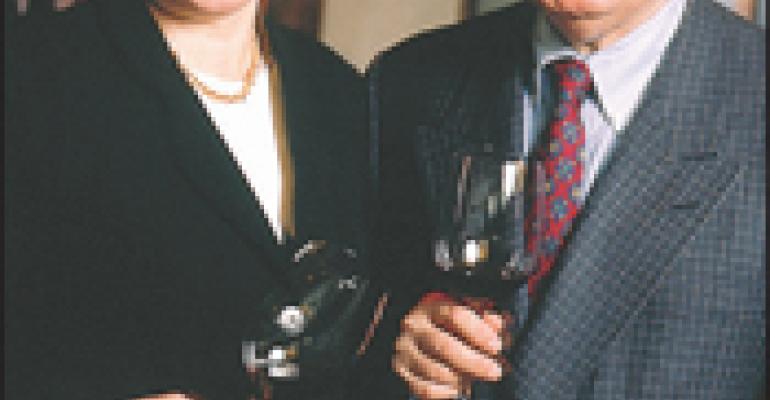We have always loved good Riesling, and we applaud the efforts of sommeliers to entice American wine drinkers by offering Riesling by the glass. Promoting Riesling has seemed to us an uphill battle, however. Riesling, even more than rosé wines, suffers from an image of being “too sweet” and therefore the opposite of chic. And yet—statistics don’t lie—Riesling is on the move.
At a Riesling-focused conference in late June, Ted Baseler, chief executive of Washington’s Chateau Ste. Michelle winery, cited Nielsen statistics that indicate a 27-percent growth in Riesling sales over the most recent 52-week period and either a first- or second-place sales ranking for Riesling in high-volume retail outlets.
The event, called Riesling Rendezvous, was hosted by Chateau Ste. Michelle and Germany’s Dr. Loosen winery and brought together Riesling producers from seven countries and five U.S. states.
In many ways, Riesling is an ideal white wine. It is flavorful—a characteristic that, despite bland Pinot Grigio’s popularity, seems to be a key consideration for mainstream wine drinkers. It is generally not bone dry, just like all those popular, mass-market Chardonnays, and it is delicious with very flavorful foods. It’s fruity, easy to drink and typically has relatively low alcohol content.
It’s also versatile. As Baseler remarked, “Riesling is for people who know nothing about wine and those who know everything about wine.”
Participating wine producers cautioned that they didn’t want Riesling to become popular so fast that it falls victim to its own success, which is what has happened with Merlot. They affirmed their dedication to making quality wines that uphold the image and reputation of the variety. And yet they acknowledged the confusion that Riesling can easily cause for consumers because of its range of styles, particularly with regard to sweetness and body.
Three blind tastings of about 16 wines each delineated Rieslings according to sweetness: dry, off-dry or “classic, fruity” style. In the dry group, residual sugar levels of the wines ranged from less than 1 gram per liter to almost 9 grams per liter, yet the wines all tasted dry or fairly dry.
Speakers emphasized the role that acidity plays in minimizing the perception of sweetness. In the dry group, only half of the wines were actually labeled as “dry.” Some labels used the term “reserve,” while others—including Alsace wines, which are traditionally dry but some of which, these days, can taste rich to the point of sweetness—had no indication of sweetness on their labels.
In the off-dry group of wines, which ranged from about 7 to 20 grams of residual sugar, only two wines, both from New York, carried any indication of sweetness; one of those was labeled “semidry” and the other, “off-dry.” But in the third tasting, featuring wines that have an unmistakably sweet taste, one of the wines, from Michigan, was labeled as “semidry.”
In the end, most delegates concluded that the points of difference that exist among Rieslings from various wine regions or various winemaking philosophies are part of the fascination that Riesling holds for connoisseurs.
And for those at the other end of the spectrum, Riesling is simply all about good taste.
WINE OF THE WEEK 2006 Chateau Ste. Michelle-Dr. Loosen “Eroica” Riesling, Columbia Valley The collaboration between German winemaker Ernst Loosen and Chateau Ste. Michelle winery in the late 1990s exposed Washington’s potential for great Riesling. The latest vintage is perhaps the finest yet. This wine is off-dry with a mouthwatering depth of succulent fruitiness, and has aromas and flavors that suggest white pepper, lime and a slatelike, mineral quality. Suggested wholesale price for a case of six bottles: About $96

